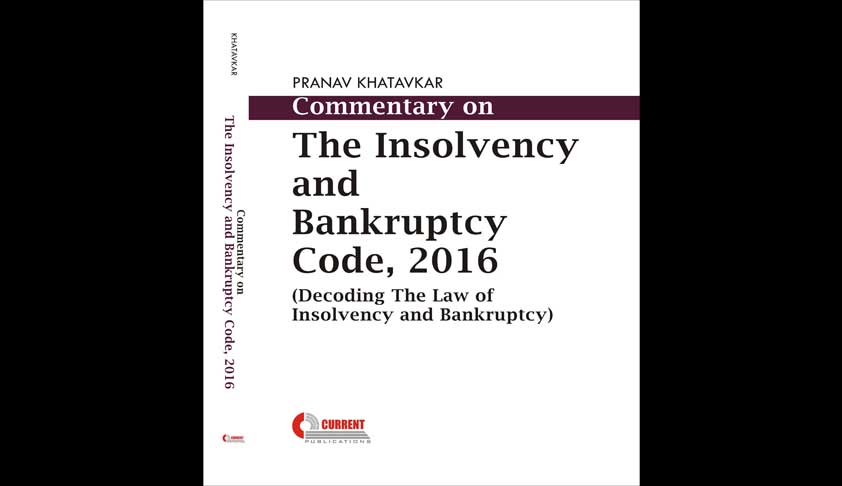- Home
- /
- Book Reviews
- /
- Has The Insolvency And Bankruptcy...
Has The Insolvency And Bankruptcy Code, 2016 Been Successfully Decoded? - Review Of Commentary On The Insolvency And Bankruptcy Code Penned By Pranav Khatavkar
Dr. Rajkumar Adukia
4 Oct 2016 11:44 AM GMT
To the best of my knowledge, this is the first commentary on the Insolvency and Bankruptcy Code, 2016("Code"). I have perused the contents of the book and at the outset my primary remark is that the author has made a genuine attempt to simplify the law. A sound understanding of the law is evident from the manner in which the provisions have been interpreted.The entire structure of this book...
To the best of my knowledge, this is the first commentary on the Insolvency and Bankruptcy Code, 2016("Code"). I have perused the contents of the book and at the outset my primary remark is that the author has made a genuine attempt to simplify the law. A sound understanding of the law is evident from the manner in which the provisions have been interpreted.
The entire structure of this book has been carefully planned and I can see that the author has invested substantial effort in the same. Along with providing a very easy to understand and a lucid commentary for each section, the author has walked the extra mile and has added certain additional features to this book that make it extremely easy for the reader to understand and navigate the Code.
The Code has brought forth a host of legal reforms by introducing several new concepts. The book begins with a brief summary on each of these concepts viz. Insolvency and Bankruptcy Board of India, Insolvency Professionals, Insolvency Professional Agencies and Information Utilities. The summary ensures that the readers are well acquainted with the new concepts even before they delve into the merits of the Code.
Further, since the Code has introduced a host of new processes pertaining to insolvency resolution, this book in order to simplify the workings of each of these processes provides flow charts. These flow charts provide make it very easy for the reader to understand and comprehend the processes.
The commentary is section wise and the original flow of the Code has been retained so far as the arrangement of the chapters goes. This makes it all the more easier to understand and navigate the Code.
Since the Code has introduced multiple processes for the insolvency resolution of different entities, varied timelines in respect of the same have also been prescribed under the Code. Hence, at the end of the book, a ready reckoner in respect of the timelines prescribed for each of the processes under the Code has been provided for.
Lastly, as the Code has amended 11 major Acts, a thorough analysis of the legal implications of the amendments brought forth by the Code has also been provided for in the book. The author has also presented the section prior to amendment and in the light of the same, analyzed the legal amendment.
All in all, this book is a ready reckoner on the Code. I congratulate the author on writing this book and I appreciate his initiative to write a book on an area of law that India Inc. is new to. I highly recommend this book not only to lawyers and law students, but also to Chartered Accountants, Company Secretaries, Compliance Experts and other Financial Professionals as this Code has far reaching implications for all professionals in the financial sector.
Dr Rajkumar Adukia is an eminent business consultant, academician, writer and speaker. He is presently the Managing Partner of Adukia & Associates, Chartered Accountants.
This article has been made possible because of financial support from Independent and Public-Spirited Media Foundation.


